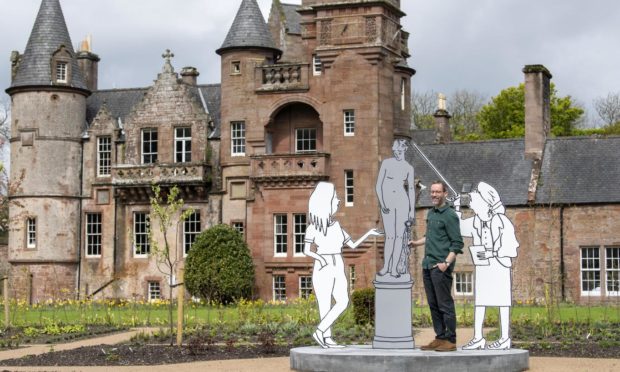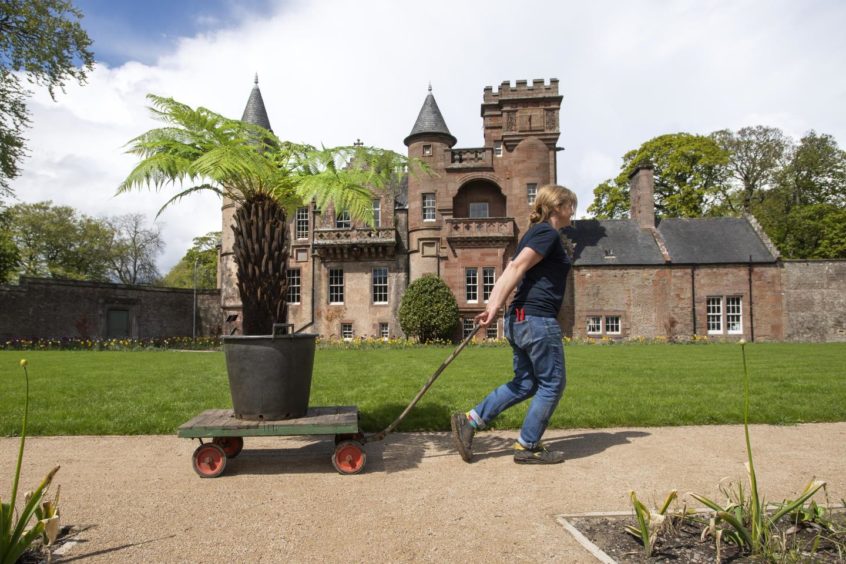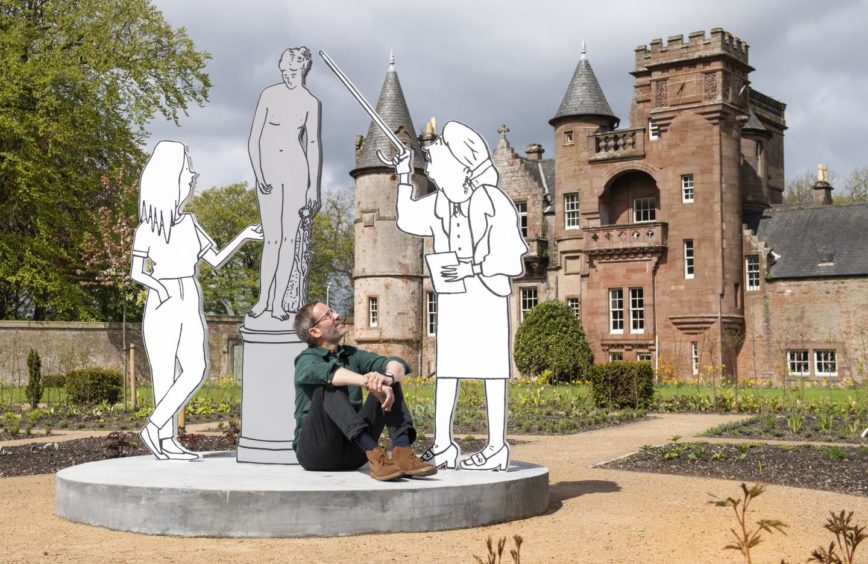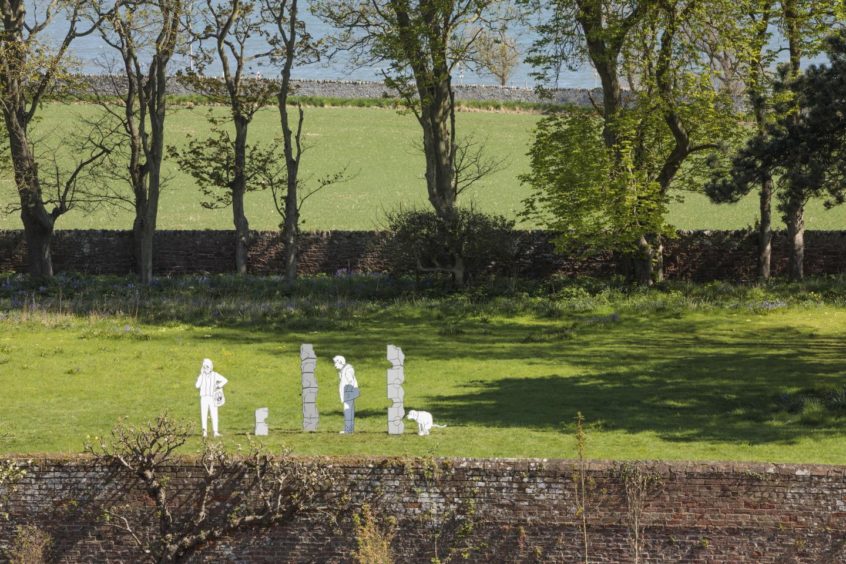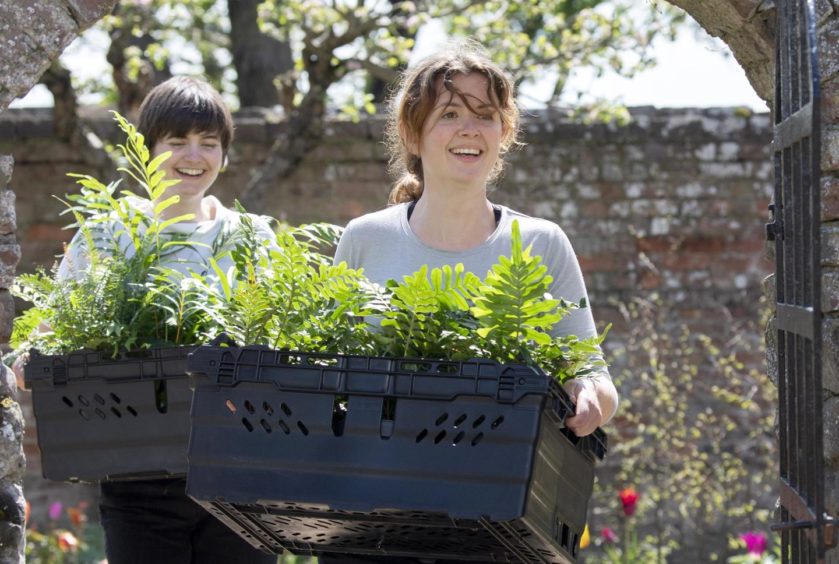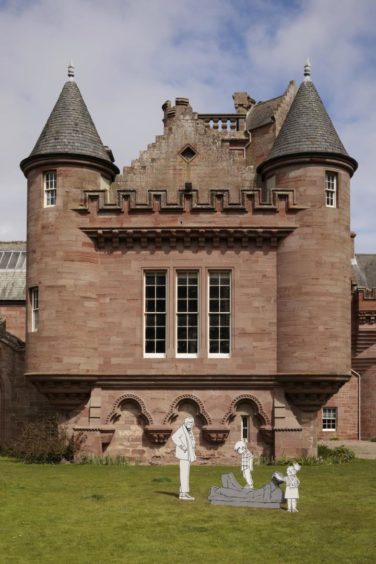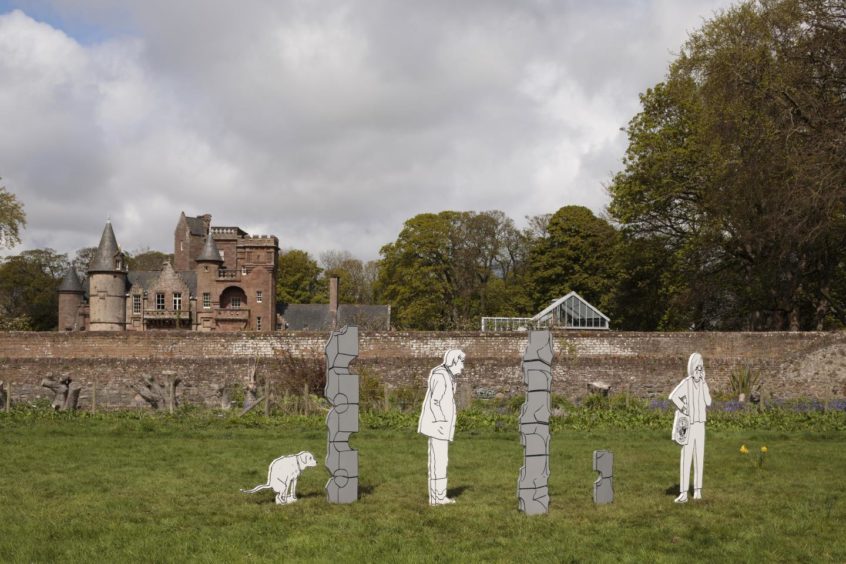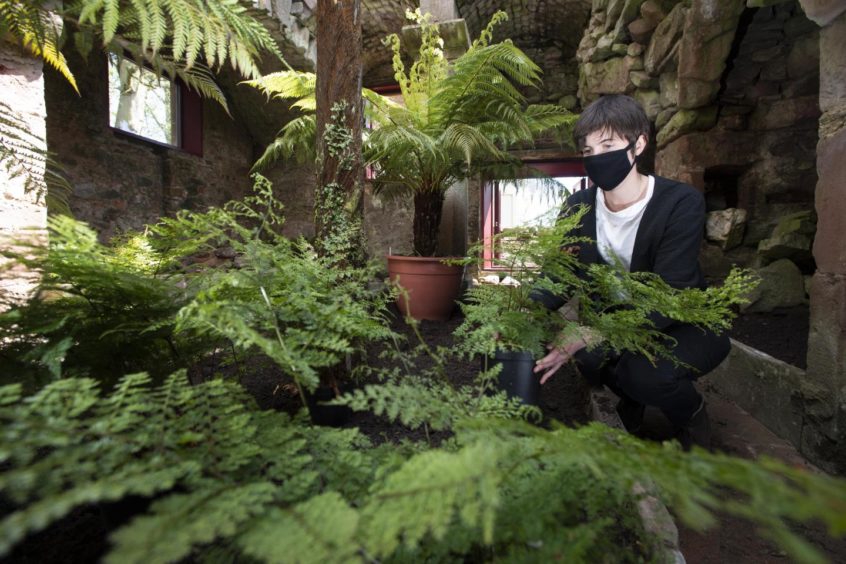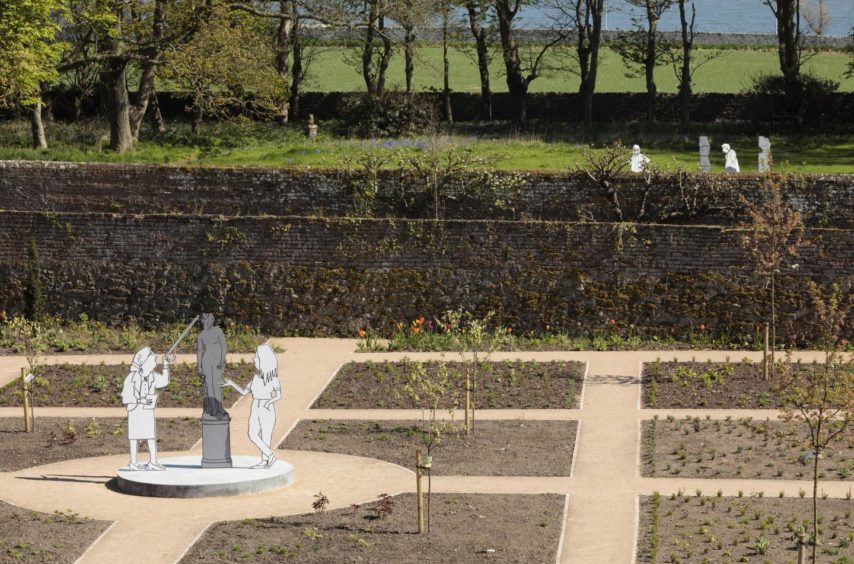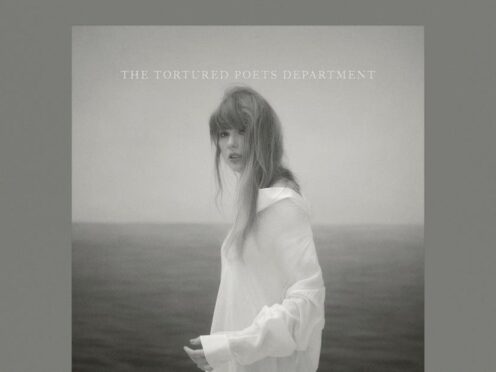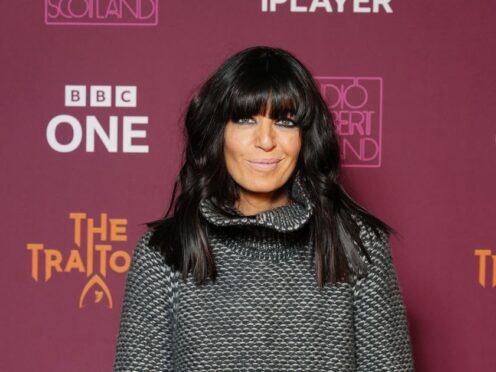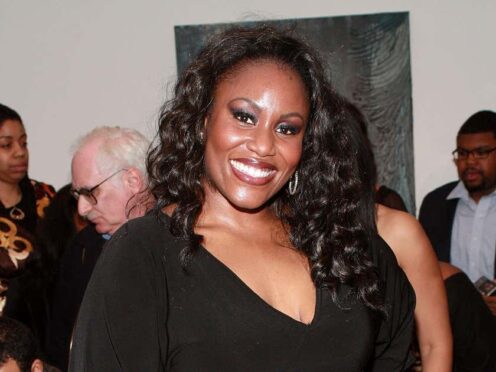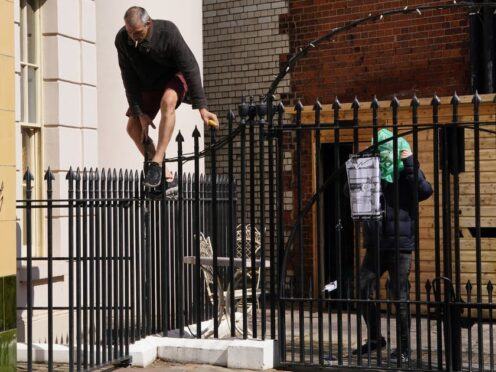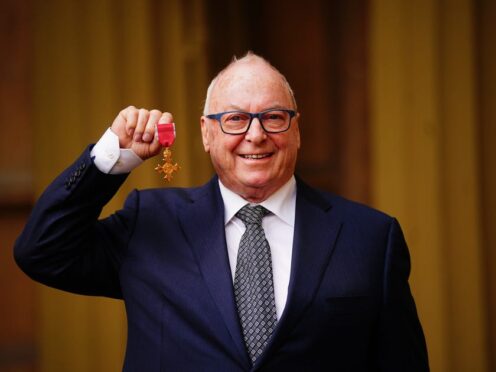In a another happy sign that life is slowly returning to some kind of normality, Hospitalfield is reopening to the public with a sculpture exhibition in the grounds and a restored fernery among new attractions.
“Hospitalfield is an extraordinarily important historic house,” says Lucy Byatt, director of the widely-known Arbroath artists’ retreat, as she tells us more about its new redevelopment.
“It’s a 19th Century house on a medieval site, and the word Hospitalfield comes from that 13th Century period, when there was a hospital built on this site to support Arbroath Abbey.
“Then in the 19th Century an artist called Patrick Allan-Fraser married the last heiress of the estate, and he spent all his life making an art school here, building a legacy to leave behind.”
In 1902, once Patrick and his wife Elizabeth had died and left the estate in trust, it was opened as an art school.
“Now we run a programme that we think really aligns to his desire to support new generations of artists, through resident programmes and so on.”
Great 20th Century Scottish painters like Joan Eardley, Robert Colquhoun and Robert MacBryde have lived and studied at the house, following in the footsteps of Sir Walter Scott, who based his 1816 novel The Antiquary on Hospitalfield, and preceding later Scottish greats who took up residency here, such as Alasdair Gray.
Where Hospitalfield has become well-known among Scotland’s creative community, however, and through local engagement programmes, it’s only been open to the public at certain times throughout the year.
That will change from this weekend, however, with a summer-long service in the new café, as well as the unveiling of newly-redesigned gardens by designer Nigel Dunnett, and Glasgow-based sculptor Mick Peter’s new artworks.
“Hospitalfield is such an interesting place, and it brings so much of Arbroath and Angus’s history with it, that we feel we have a role in the region to attract people, to become a destination,” says Byatt.
“Arbroath was such a successful seaside town, but like many towns of this size, even before the pandemic, there was a struggle going on. Amazing people and incredible initiatives, like the fantastic Arbroath market, were trying to bring their town back.
“Lots of people work very hard to make Arbroath a great place, and we just want to participate in that, really.
“We’ve received funding from the Tay Cities programme, which is about bringing the region together to really become more than the sum of its parts.
“We want to become part of that story, which means it’s important that we share Hospitalfield with more people than we have done in the past.”
One of the key attractions of this new season at Hospitalfield will be Gerroff! (or User Feedback), a new series of outdoor sculptures by Glasgow-based artist Mick Peter, whose work has recently been seen at the Baltic Centre for Contemporary Art in Gateshead and at the Glasgow International festival.
The work was commissioned to be shown last year, but Covid-related delays mean it’s timed perfectly for the reopening.
“For want of a better word (my works are) friendly, in the sense that they’re accessible, they make contact with their viewers in a different way, and Lucy maybe thought that was appealing,” says Peter.
“The works use space in an unusual way, they’re quite expansive, and I think she was interested in this idea of something that really responded to the environment.
“There are three groups of sculptures in the garden, and each group, in effect, is like a three-dimensional illustration.
“In each grouping there’s a number of recognisable characters who are interacting with drawings of sculptures, they’re prodding them or ignoring them or climbing on them or whatever. I was interested in this idea of public art – of things that are outdoors, so not in a gallery environment – and how people respond to those things, for good or for bad. It’s really just having a bit of fun in a way that’s not hugely reverential.”
Hospitalfield is pretty welcoming. People go there to walk their dogs in the grounds, it seems to be part of what people consider public space
Does Peter believe that putting work in an environment like this opens it up to a different, wider audience?
“I think people are pretty capable when it comes to looking at artwork, maybe just the means of looking at it’s the thing that’s less inclusive,” he says.
“You know, there’s that threshold problem of going into galleries, which is perhaps the off-putting thing. Hospitalfield is pretty welcoming, though. People go there to walk their dogs in the grounds, it seems to be part of what people consider public space in Arbroath. That’s a really nice thing, it feels quite free because of that.”
Peter has also been commissioned to create the tables in the new café using a similar method.
“We’ve built a rather beautiful café in the corner of the walled garden,” explains Byatt of this new aspect.
“It will be open from Wednesdays to Sundays, which is changing the nature of Hospitalfield considerably. The menu will change every day, very much focused on local Angus produce – if you set a café up here it means you can get some of the freshest produce, the best fruit and vegetables and meat and fish, you can imagine.
“This is a maverick place, there’s nothing that really fits together,” she continues.
“Our next phase will be restoring the Mortuary Chapel, but for now the fernery is a little grotto; the ferns are being given to us by the Royal Botanic Garden in Edinburgh, which is so generous of them. Once they’re established and they’re breathing, the glass roof will be misted and it will warm the garden.”
The new garden areas were designed by Professor Nigel Dunnett, Professor of Planting Design at the University of Sheffield, and also director of the Nigel Dunnett Studio design practice.
“I was approached directly by Lucy Byatt, who asked if I would be interested in the project,” says Dunnett.
“The brief was to explore the use of plants in gardens over the past 800 years, as they might have been used in Hospitalfield from its earliest Monastic origins through to the Victorian and Arts & Crafts era, when the current building was built.
Restoring the walled garden
“The walled garden had been largely untouched for the past few decades, and a group of enthusiastic volunteers had managed to keep the gardens ticking over.
“I took the view that this was a unique opportunity to make a fresh start and to create something of value to future generations, and therefore we might have to make some hard choices about removing trees and much-loved plants; I really wanted to make the most of warm and sheltered spots, so we removed the contents of the previous garden – saving plants that might be useful – and started again.
The essence of a Medieval monastic garden
“I wanted to create a real journey through the gardens, and a sense of adventure. Nearest the house, alongside the new fernery and cafe, is a formal lawn, a calm, flexible space for people to picnic on, but large enough for events and performances.
“Next, the formal garden is where we tried to recreate the essence of a Medieval monastic garden.
“Square beds filled with monastic plants – herbs, medicinal plants, symbolic plants – and productive trees such as crab apples and quinces are arranged around a series of paths with vistas and focal points.
“There is also an orchard with heritage apple varieties and a wildflower meadow, then the final area is the Lower Walled Garden, which is intended to be more relaxed, less formal, a bit quirkier.”
We can make sure that it’s not too crowded – an overcrowded garden when you’re expecting a bit of peace and quiet’s not so great.
The combined effect should come to entirely change the perception of Hospitalfield.
“We’ve tended to be open for a weekend, and then go back to our residential business,” says Byatt. “But now we’re open to the public, we look forward very much to welcoming people.
“We’re just about to put up our programme, although we have a more complex booking system than normal (due to Covid). That’s good, it means we can make sure that it’s not too crowded – an overcrowded garden when you’re expecting a bit of peace and quiet’s not so great.
“Gardens are good for you, gardening is one of the things that people have most delighted in over lockdown,” she continues.
Making the gardens a welcoming place
“We really look forward to people coming to visit us again and again. A new garden is like a tiny little baby’s fist clenched with all that potential, and hopefully as it gets warmer, it will begin to spring into action. Over the years, following the garden will be a brilliant thing to do, because you’ll see everything maturing, and Nigel’s vision maturing.
“The same with our programme, it will accumulate and mature, and people will have lots of experiences here – a different one if you return.
“That’s what we really hope for, that people feel it’s a place you come to often, and where you can enjoy the outdoors. We feel really happy to be opening. We feel that it’s safe, that people can enjoy themselves, and that they can have a very relaxed time here.”
- Hospitalfield’s Gardens, Fernery and Café in Arbroath are now open to the public every Thursday to Sunday between 10am and 5pm. Mick Peter’s outdoor sculptures Gerroff! (or User Feedback) are available to view until Sunday, October 31. See hospitalfield.org.uk for more.
